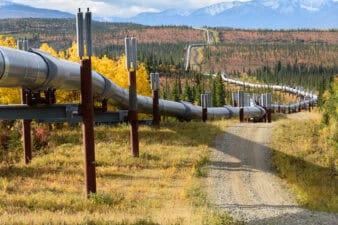Is the Canada Pension Plan (CPP) safe in the current market crash? In theory, it is, but is it also the reality? The economic devastation and disruption of the investment environment by COVID-19 is causing great concern. Retirees are worried that the CPP won’t be there when you retire.
Pension fund
The Canada Pension Plan Investment Board (CPPIB) is the investment arm of the largest pension plan in Canada. As of December 31, 2019, the board is managing total net assets worth $420.4 billion on behalf of retirees. CPPIB’s supreme task is to invest the fund, grow the pot of money, and keep the fund healthy come hell or high water.
Also, the CPPIB is arms-length from the government in order to prevent any political interference whatsoever. But with the coronavirus still raging and a deep recession coming, the sustainability of the fund is in question.
Actuarial report
The CPP consists of two components: the base CPP before 2019 and the additional CPP or the new CPP enhancement as of 2019. In the 30th Actuarial Report as of December 31, 2018, the projection is that CPP contributors will increase to 18.4 million in 2050 from 14.5r million in 2019.
From the base CPP, the expected benefit payments will grow from $49 billion in 2019 to $188 billion in 2050. The total payouts from the additional CPP will grow to $28 billion in 2020 from $0.1 billion in 2019.
In the same report, total assets from the base CPP is expected to grow to $688 billion by 2030 and $1.7 trillion by 2050. The asset value of the additional CPP should be around $191 billion by 2030 and $1.3 trillion by 2050. But the actual results might differ from the projections because economic and investment environments are changing.
Nevertheless, CPPIB’s investments are broad and international. The asset mix is composed of government bonds, public and private equities as well as real assets. As of year-end 2019, the five-year and ten-year annualized investment rate of return is 10.4%.
One of CPPIB’s stock holdings is petroleum and natural gas producer TORC (TSX:TOG). The stock price of this $206.3 million energy company has sunk to below $1 per share due to the pandemic and rapid decline in oil prices. CPPIB can absorb the inevitable losses because it maintains a widely diversified portfolio.
TORC has also slashed its dividends as a way to protect its balance sheet and ensure the sustainability of the business model. Future dividend cuts or adjustments are subject to the board of directors’ assessment of TORC’s near-term growth outlook, funds from operations, and capital expenditure requirements, among others.
This Calgary-based firm will defer, reallocate, and reduce capital starting Q3 2020. Still, the company’s asset base has the operational flexibility to match cash flows.
Other strengths include a low decline rate, low capital cost per well, no drilling commitments, and limited take-or-pay contracts. Also, there are no land expiry concerns.
No shortfall
According to the CPPIB, the 2020 market crash will leave no shortfall in the payment of CPP benefits. The most recent report by the Chief Actuary of Canada indicates the CPP’s sustainability over a 75-year projection period.








